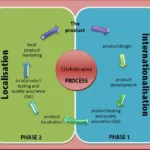Hollywood has always been very open to the new developments and innovations in technology, and films have benefits quite a bit from them over the years. From green screens and CGI to 4D theaters, technology has always played a very important part in making movies great. There are many different areas of movies that are affected by technology in a very positive way.
The post production process of films has greatly benefited from technological innovation. Modern technology has allowed stunning visual effects to be added to movies after all of the scenes have been filmed. These effects enhance the audience’s overall experience, bringing them closer to the action and storylines.
Computer graphics have become a staple in modern cinema, and most of the time it is very subtle. While sometimes it’s more obvious (a large explosion or computer generated creature of some kind), many times it’s something as simple as extra buildings or vehicles added into a scene in post production. Steady cam equipment has also had a tremendously positive effect on modern films, giving them a more intimate look and feel.
You’ve probably noticed that animated films today are much more detailed and better-looking than they were even ten years ago, and that is due to the use of computer graphics. CGI technology has come a long way in a short period of time, and any recent Pixar film is a testament to that. These days animated films from major studios like Disney are ultra-realistic down the smallest detail. Millions upon millions of dollars has gone into developing this technology, and it’s really proven to be well worth the expense.
One prime example of technology’s use in films is the 1993 blockbuster movie Jurassic Park. The dinosaurs are the real stars of this movie, and it’s because of the incredible computer animation work. Director Steven Spielberg was going to use stop motion animation for the dinosaurs, until he discovered just how much better they looked with CGI technology, which was very new at the time. The special effects in this film still hold up extremely well even today, which says a lot about the far-reaching capabilities of this technology.
Even shooting a movie with digital technology is much easier than film, simply because it allows you to do more in a shorter period of time. With this digital technology, a number of cameras can be simultaneously used to record the same shot. This has saved countless hours of retakes to get just the right angle in a scene. Most filmmakers tend to prefer shooting digitally because it saves so much time and frustration overall.
While CGI technology is often used to add things to films, it is also used to remove them. Although it may have never occurred to you before, modern film tech has been responsible for removing everything from trees to skyscrapers in movies. If there is something in the shot that a filmmaker doesn’t want there, it can most likely be easily removed with this technology.
The Jigsaw short horror film that was recently screened at a film festival is yet another great example of technology’s incredible role in the motion picture industry. This short horror film features some truly amazing visual elements, and the clever use of color and lighting adds a truly authentic look and feel. It offers a very visceral experience for viewers, providing the audience with a genuine feeling of suspense. This particular short film perfectly represents technology’s ability to help make a film great without being too intrusive.
Technology of some kind has been used in making films from the very beginning, but it has evolved at a rapid pace throughout the years. The photorealistic animation of The Jungle Book (2016) is one example of overtly positive technological developments in film. There will surely be many more movies that will continue to implement this technology as it grows and evolves. Whether it is subtle or more in-your-face, technology plays a crucial role in modern filmmaking, and it has the ability to enhance the experience of viewers in a very substantial way. There is no doubt that these technological developments are largely for the better.








